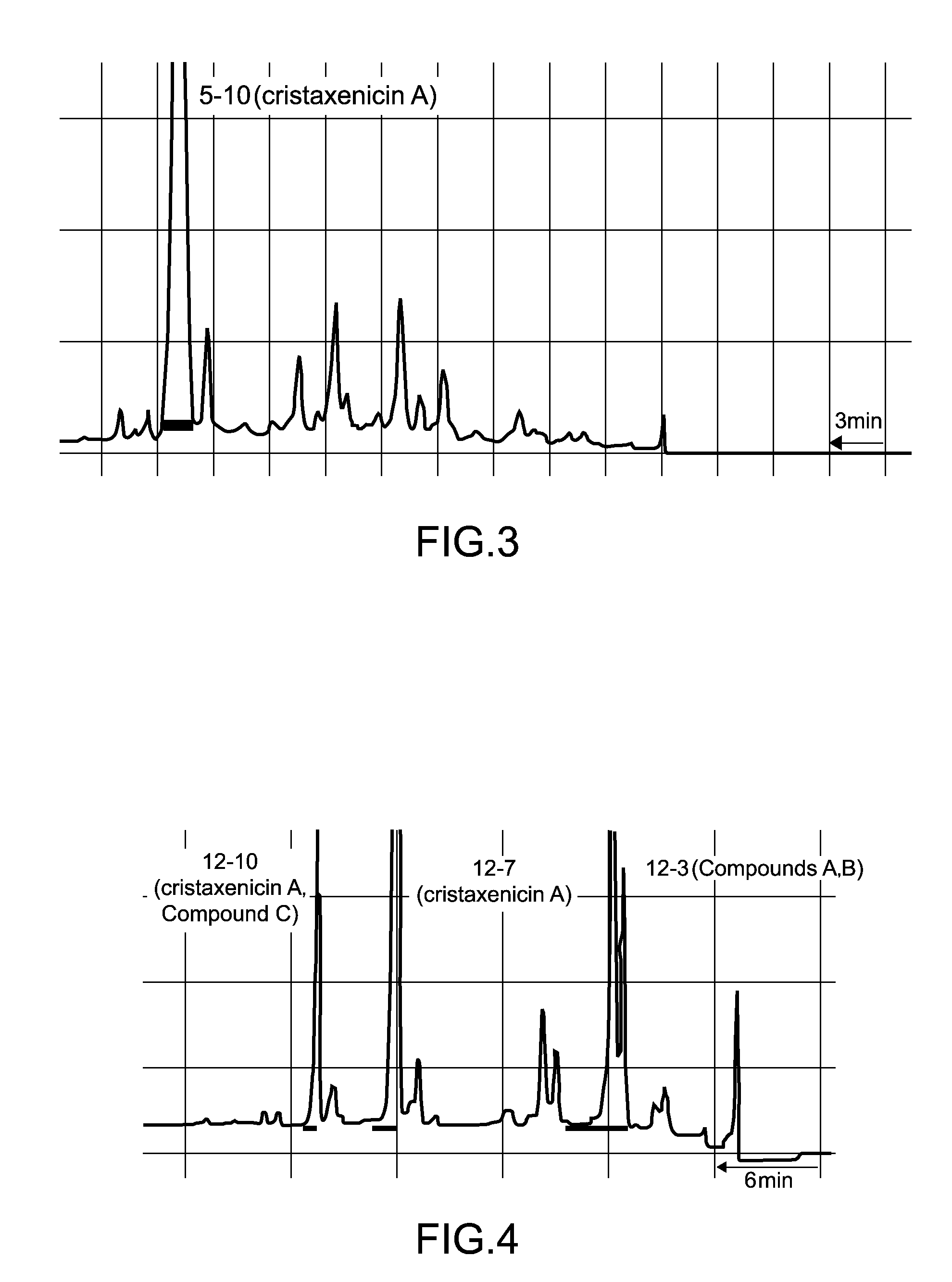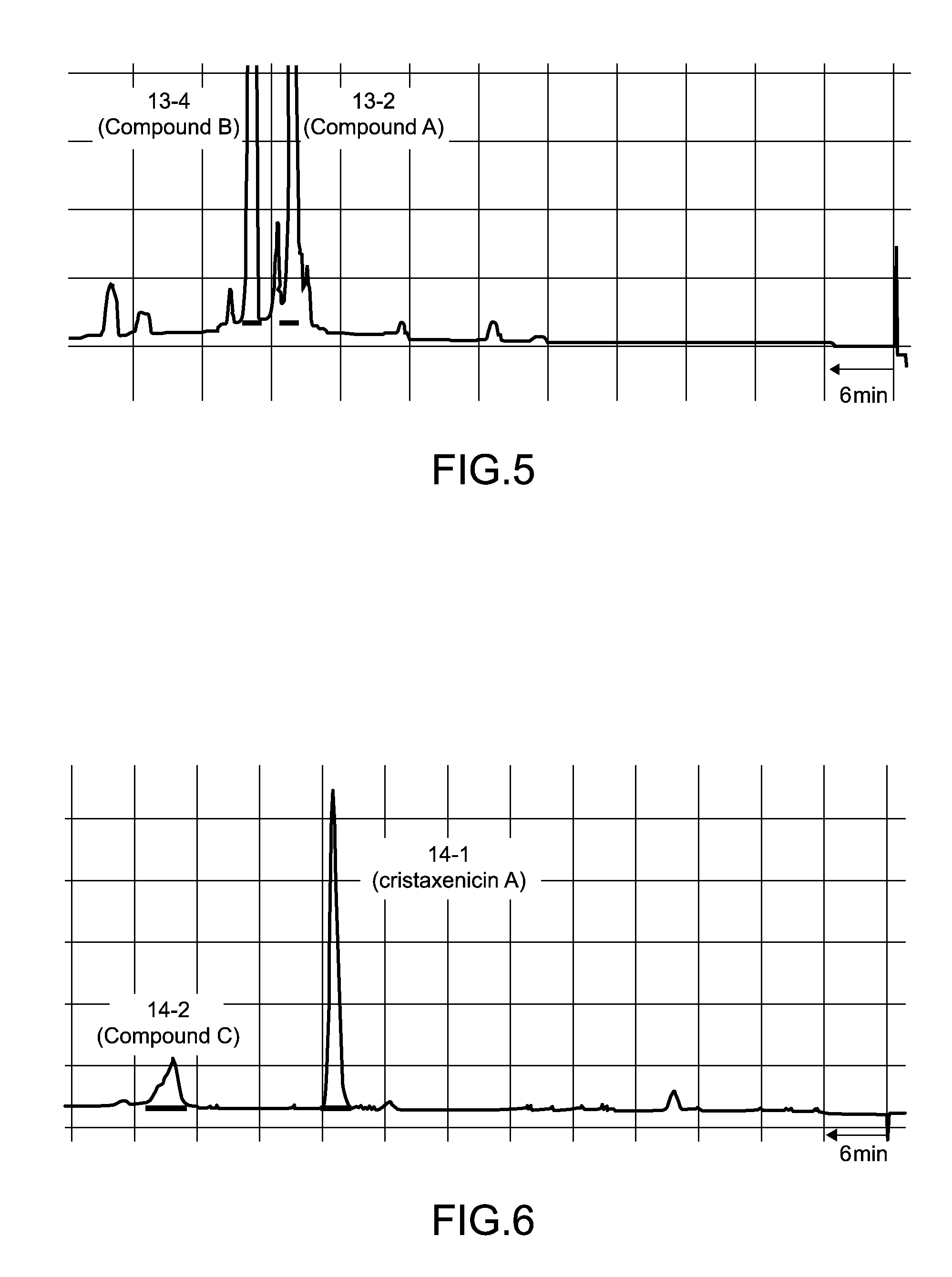Antiprotozoal compound derived from coelenterata
a technology of antiprotozoal compound and coelenterata, which is applied in the field of antiprotozoal compound derived from acanthoprimnoa cristata, can solve the problems of enormous psychological distress, and achieve the effect of no noticeable improvement in symptoms
- Summary
- Abstract
- Description
- Claims
- Application Information
AI Technical Summary
Benefits of technology
Problems solved by technology
Method used
Image
Examples
example 1
1. Screening of Antiprotozoal Substances Derived from Japanese Inshore Marine Invertebrates
[0033]For marine invertebrates collected in Japanese inshore waters, individual specimens of the same species were extracted with methanol, and concentrated, then the extract was subjected to two-layer partitioning using water and chloroform. The dry weights of the crude extracts of the obtained water-soluble fraction and lipid-soluble fraction were measured. Further, conducting the bioactivity tests described below, the antiprotozoal activity against Leishmania parasites, and the cytotoxicity against human cervical cancer-derived HeLa cells and mouse lymphoma-derived P388 cells were measured.
2. Bioactivity Tests
[0034]2-1 Antileishmanial Activity Test
[0035]EGFP transgenic Leishmania protozoa (LaEGFP, Okuno T et al., Exp. Anim, 52: 109 (2003)) 1×105 cells were inoculated into a 96-well plate, and a sample diluted with a culture medium was then added and incubated for 72 hours. Subsequently, the...
example 2
Isolation of Novel Antiprotozoal Substances
[0041]1. Fraction 5-10
[0042]Separation procedures for the antiprotozoal substances derived from 90 g of the Acanthoprimnoa cristata of the sample C07110 is shown in FIG. 1 and FIG. 2. With reference to FIG. 1, the animal individuals were extracted with methanol, and following concentration, the extract was subjected to two-layer partitioning using water and chloroform. The water layer was further extracted with n-butanol, and the thus obtained n-butanol layer was mixed with the chloroform layer and concentrated. This extract fraction was subjected to Kupchan partitioning (Kupchan, S. M. et al., J. Org. Chem., 38: 178 to 179 (1973)), yielding an n-hexane fraction, a chloroform fraction, and a 60% methanol-soluble fraction 2-3. The fraction 2-3 was separated by ODS flash column chromatography [50% methanol, 70% methanol, 70% acetonitrile, 85% acetonitrile, methanol, chloroform / methanol / water (6:4:1)]. Of the resulting fractions, the 70% metha...
example 3
Structural Analysis of Novel Antiprotozoal Substances
[0049]1. Fraction 5-10
[0050]The instrumental analysis data for the antileishmanial substance fraction 5-10 was as follows. [α]21.7D+90.5° (c 0.22, MeOH); IR 2931, 1755, 1681, 1616, 1454, 1371, 1340, 1209, 1176, 1108, 1076, 1015 cm−1; UV (MeOH) 231 nm (log ε 4.28); FABMS m / z 431 [M+H]+, 453 [M+Na]+; HRFABMS m / z 431.2089 (calculated for C24H31O7 431.2070)
[0051]The results of high resolution fast atom bombardment mass spectrometry (HRFABMS) revealed that the molecular formula of the antileishmanial substance isolated as the fraction 5-10 was C24H30O7. The results of 1H NMR spectral analysis indicated that the antileishmanial substance had two acetyl groups (δH 2.10, 2.05), one aldehyde group (δH 9.27), and two methyl groups (δH 1.75, 1.68). The results of 13C NMR spectral analysis confirmed 24 carbon atoms, and revealed that the antileishmanial substance had a conjugated ketone group (δ 198.2). The results of 1H-1H correlation two-di...
PUM
| Property | Measurement | Unit |
|---|---|---|
| longitude | aaaaa | aaaaa |
| latitude | aaaaa | aaaaa |
| length | aaaaa | aaaaa |
Abstract
Description
Claims
Application Information
 Login to View More
Login to View More - R&D
- Intellectual Property
- Life Sciences
- Materials
- Tech Scout
- Unparalleled Data Quality
- Higher Quality Content
- 60% Fewer Hallucinations
Browse by: Latest US Patents, China's latest patents, Technical Efficacy Thesaurus, Application Domain, Technology Topic, Popular Technical Reports.
© 2025 PatSnap. All rights reserved.Legal|Privacy policy|Modern Slavery Act Transparency Statement|Sitemap|About US| Contact US: help@patsnap.com



